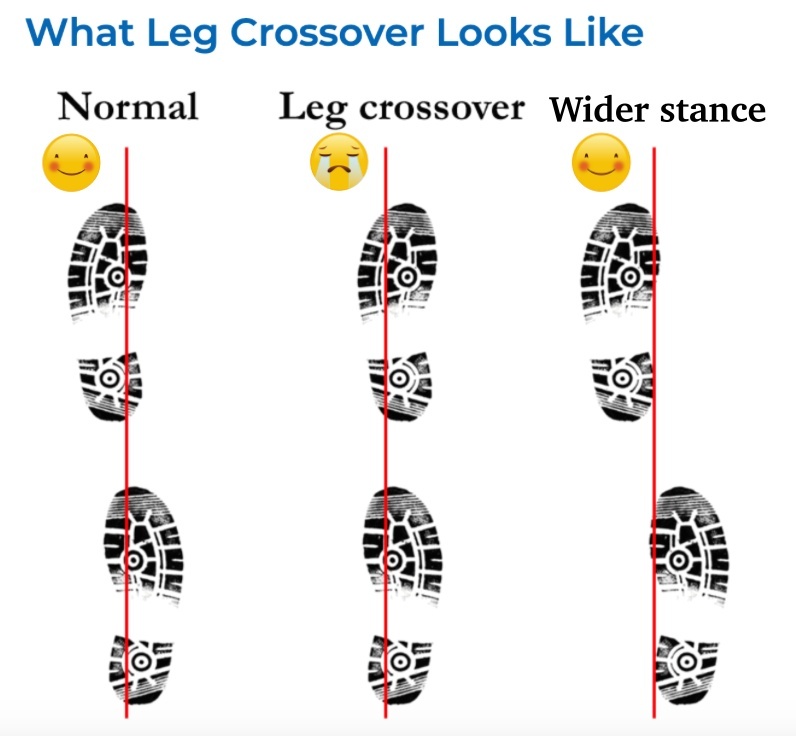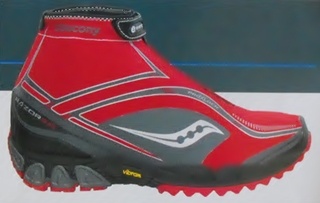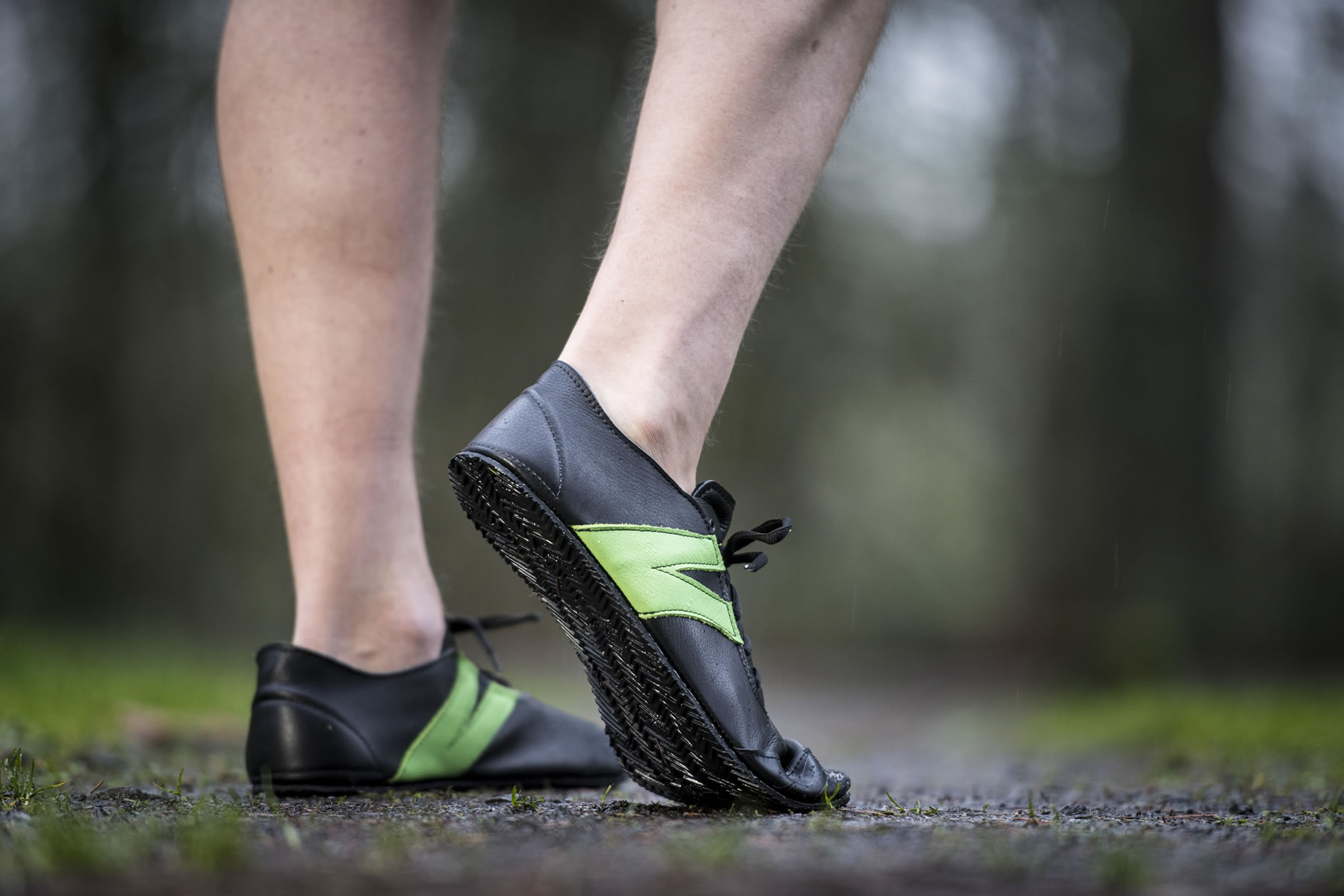In running, the main cause of IT band pain is when the IT Band compresses the knee’s outer fat pad, resulting in pain and swelling to the area. This issue arises in a crossover running stride, which means the foot lands across the midline, instead of on the midline, or slightly away from the midline, shown below:
The big issues with a crossover running gait is it causes the shin to rotate too far inwardly during stance, which causes the IT band to compresses the fat pad and peripheral nerves in the area, while preventing blood flow from passing through. The only way around this is to avoid heel striking, and instead, land with a forefoot strike. Here’s why:

- IT band pain arises when the shin bone bends too far inward when the foot crosses over the midline, which transfers more frictional and tractional forces from the IT band to the knee’s outer fat pat. At the same time, the IT band compresses the fat pad, too, putting additional stress on the area. And, that’s hardly the worst of it because relying on cushioned running shoes can rapidly ratchet up abrupt shifts in heel motions during stance.
As it turns out, material properties of shoe cushioning powerfully influences movement patterns of the foot whereby the more compressible (i.e squishy) the underfoot cushioning is, the more pronounced the problem of over-pronation becomes.
- Foot pronation is a fancy science term for too much unwanted straining motions of the foot during the stance phase of running whereby underfoot cushioning is the only factor that unintentionally pushes the foot into extreme positions. This is why stability reinforcements are added to these shoes -to prevent the cushioning from pushing the foot away from its neutral line of tolerance.
These findings complement the growing evidence that affirms heel strike running, especially in thick cushioned running shoes, causes a number of mechanical misalignments that are solely responsible for IT band injury.
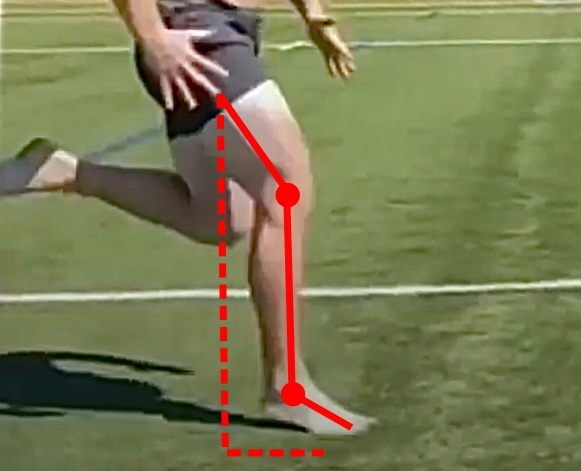
A shorter stride angle engaged by a forefoot strike means there’s less time for the foot to swing way out in front of the hips, instead, the added knee flexion, again, engaged by the forefoot strike, acts like a stopper on the foot, restraining over-reaching by getting the foot to drop closer to your hips.

The biggest takeaway is how we use our foot strike and stride mechanics when running has big implications for IT Band injury. If you’ve been working to get rid of your IT band injury, it takes the combination of a shorter stride length and a wider stance width to improve and resolve symptoms, and forefoot running enhances these parameters; heel strike running impedes them.
Last, but not least, IT Band injury is far from being the only injury caused by heel striking when running. Heel strike running also causes the knee-joint to dangerously overheat, whereas forefoot running is gaining almost universal acclaim for fully resolving and preventing the dreaded runner’s knee. Read more here!
If you’ve enjoyed my post, you’ll love my YouTube channel, here, where I show why forefoot running is better than heel strike running.
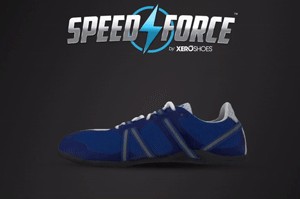
References:
Falvey et al. Iliotibial band syndrome: an examination of the evidence behind a number of treatment options. Scand J Med Sci Sports, 2010; 20(4):580-7.
Glodzick, P. Injury spotlight: Iliotibial band syndrome. Running & Fit News, 2009; 27(1): 16.
Meardon et al. Step width alters iliotibial band strain during running. Sports Biomech, 2012; 11(4):464-72.
Bretta Riches
BSc Neurobiology; MSc Biomechanics candidate, ultra minimalist runner & founder of RunForefoot. I was a heel striker, always injured. I was inspired by the great Tirunesh Dibaba to try forefoot running. Now, I'm injury free. This is why I launched Run Forefoot, to advocate the health & performance benefits of forefoot running and to raise awareness on the dangers of heel striking, because the world needs to know.
Latest posts by Bretta Riches (see all)
- Does Foot Strike Really Matter in Running? YES! - 17/04/2024
- Heel Lifts Increase Injury in Runners - 16/04/2024
- Are Minimalist Shoes Good for Seniors? YES! - 14/04/2024

